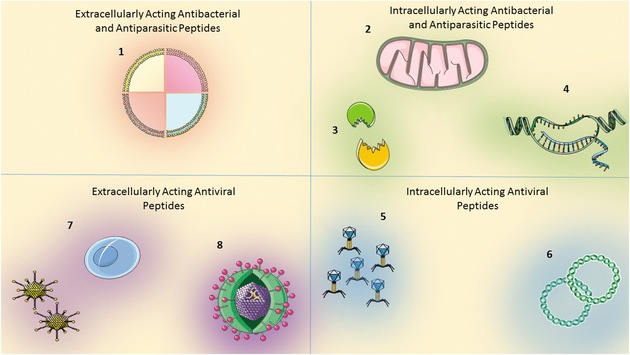Figure 4.

Mechanisms of action of antimicrobial peptides. Antimicrobial peptides may either (1) cluster at the cell surface and cause membrane disruption by several different mechanisms (e.g., barrel staves, carpets, toroidal pores), (2) translocate into cells and impair intracellular organelle machineries, (3) impair protein–protein interactions, enzymatic cascades, and cytosolic signaling pathways, (4) interact with nucleic (not in the case of bacteria) acids, trap replication forks, and compromise nucleic acids as well as protein synthesis, (5) preclude several steps of viral replication, (6) inhibit genetic material trafficking, reverse transcriptase, and viral proteases, (7) block the interaction between virus and host cells (e.g., viral envelope glycoproteins gp120 and gp41 or co‐receptor CXCR4), compromising virus binding and entry, and (8) cause membrane lysis on enveloped viruses. See text for detailed description. Designed using Servier medical Art.
